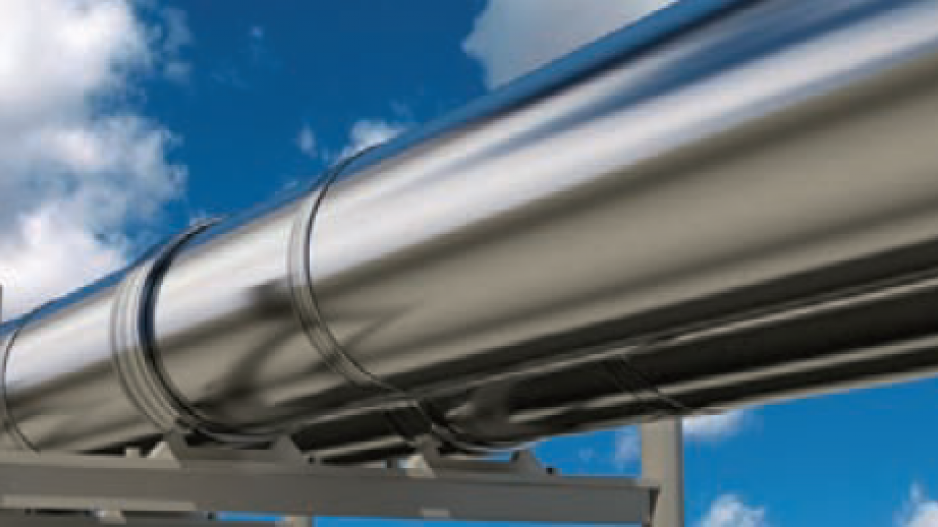Westcoast Energy Inc.’s three pipeline expansion proposal projects—Jackfish, High Pine and Wyndwood—should be treated as a single project that would trigger an environmental assessment, says B.C.’s West Moberly First Nations (WMFN).
Alternatively, WMFN is asking Catherine McKenna, federal environment and climate change minister, to designate the High Pine expansion project as a “designated project” pursuant to the Canadian Environmental Assessment Act, 2012 that by virtue of its characteristics and location, it may cause environmental effects, and specifically environmental effects on Aboriginal people.
However, Westcoast contends that extensive hearing procedures, similar to those for the Enbridge Inc. Northern Gateway and TransCanada Corporation North Montney pipeline projects, are “neither necessary or appropriate” for the proposed $360 million High Pine expansion, which consists of two 42-inch loops totalling 39.2 kilometres on the Fort Nelson Mainline between Wonowon and Chetwynd.
“Westcoast and its shippers will be prejudiced if the project is delayed,” said the company. It is planning to begin pre-construction activities in March 2016 so that construction can be completed by the end of this year, adding about 240 mmcf per day of incremental capacity.
Letters of comment from AltaGas Holdings Inc., Black Swan Energy and Painted Pony Petroleum Ltd. make it clear that timely construction of the project is critical, said Westcoast in a letter to the NEB.
However, while all the projects are slightly below the 40 kilometre threshold required for a public hearing, combined they constitute more than 100 kilometres, which would trigger an environmental assessment, Caleb Behn, land use manager for West Moberly First Nations (WMFN), said in a letter to the NEB and to McKenna.
“These three projects are each large diameter pipelines, in the same area, and will finish construction and be in service within one year of each other,” Behn said. “All three routes are in close proximity to WMFN’s preferred treaty territory and specifically the Area of Critical Community Interest.
“These projects likely will affect our members’ Aboriginal and Treaty No. 8 rights, protected under the Constitution Act, 1982 and are likely to result in the destruction of critical habitat for the Klinse-ze (Moberly) caribou herd.”
However, in a letter to the NEB, Westcoast stated that there is “no basis in fact” for either the High Pine and Jackfish Lake projects to be viewed as single expansion projects or for designation of High Pine as a “designated project.” The two projects, it said, are independent of each other and involve different facilities, shippers, contracts, supply areas, delivery points and in-service dates.
According to Westcoast, engagement with West Moberly First Nations continues and the company’s environmental and socioeconomic assessment for the projects prescribes mitigation to ensure that the residual effects on traditional land use and caribou habitat will not be significant. Mitigation includes access management, post-construction reclamation, and a caribou mitigation and monitoring plan.
A second Aboriginal group, Saulteau First Nations, also supports a determination of “designated projects.” All three projects are located in the same geographic areas, are to be constructed in sequence and are all described by Westcoast (Spectra Energy Transmission) as expansions of its Transmission North system, it pointed out in a letter to McKenna. “Together they represent over 100 kilometres of large diameter pipeline construction within the core of our traditional territory.”
Saulteau said it is concerned about potential direct and indirect impacts on its rights and interests and wishes to be meaningfully consulted about the projects. It also asks that the minister ensure it has the time and resources necessary to review the application materials, to present its views to retain technical experts and to engage in discussions about potential project impacts, avoidance and mitigation measures and other solutions.
In addition to the two loops (one nine kilometres and the other 29 kilometres), the High Pine expansion project includes a new compressor unit to the Sunset Creek compressor station and modifications to existing compressor stations, according to the Westcoast application to the NEB.
The $216 million Jackfish Lake expansion project would provide about 137.5 mmcf per day of incremental capacity with the addition of two 36-inch pipeline loops (24.5 kilometres and 12.5 kilometres) on the Fort St. John Mainline that would expand the system between Taylor and Chetwynd. Work is planned for this year with a targeted in-service date early in 2017.
The third proposed project, the Wyndwood pipeline expansion, would add a 27 kilometre, 36-inch loop on the Fort St. John Mainline, providing up to approximately 50 mmcf per day of added transportation capacity. The tentative in-service date is late 2017.
NOVA Gas Transmission Ltd., a Westcoast competitor in the area, in a letter to the board regarding the proposed High Pine and Jackfish Lake expansions, said more information is needed and suggested that any NEB process should include an opportunity for interested parties to ask for information requests of Westcoast.
In response, Westcoast said there is no reason for the board to depart from its usual process for section 58 applications and allow NGTL to ask for further information requests, and urged the board to issue a decision as expeditiously as possible.




